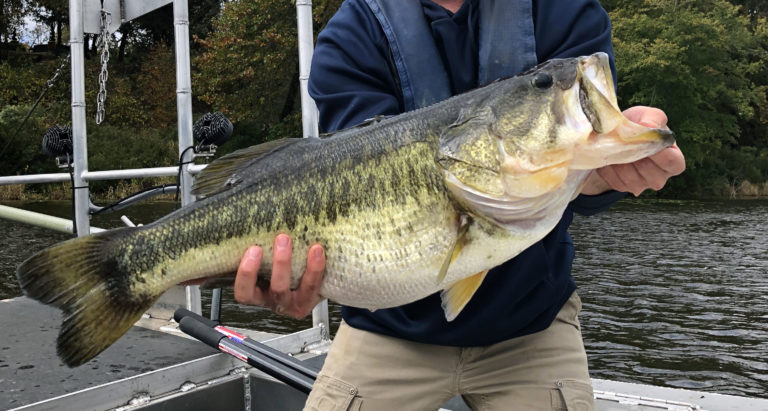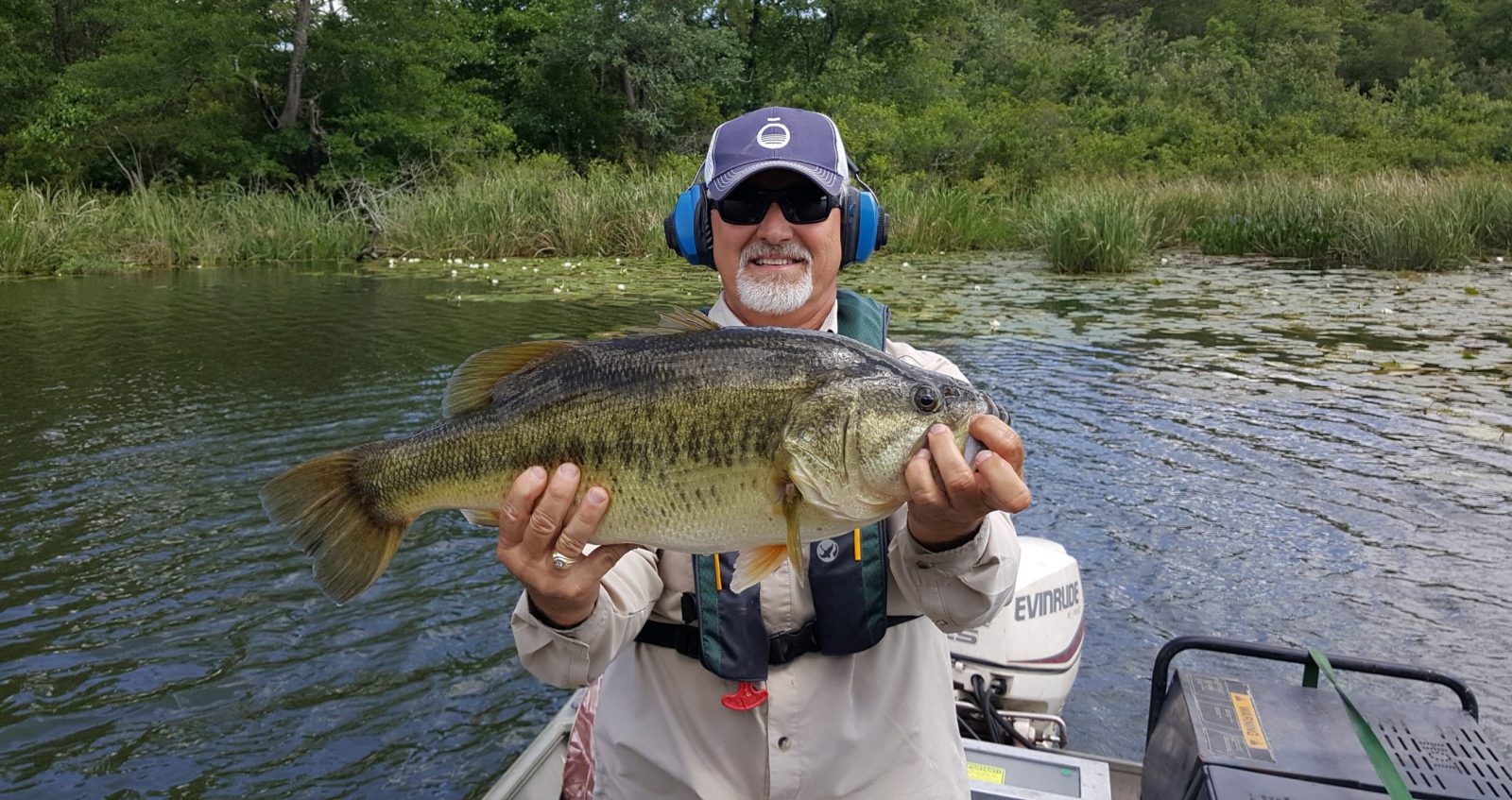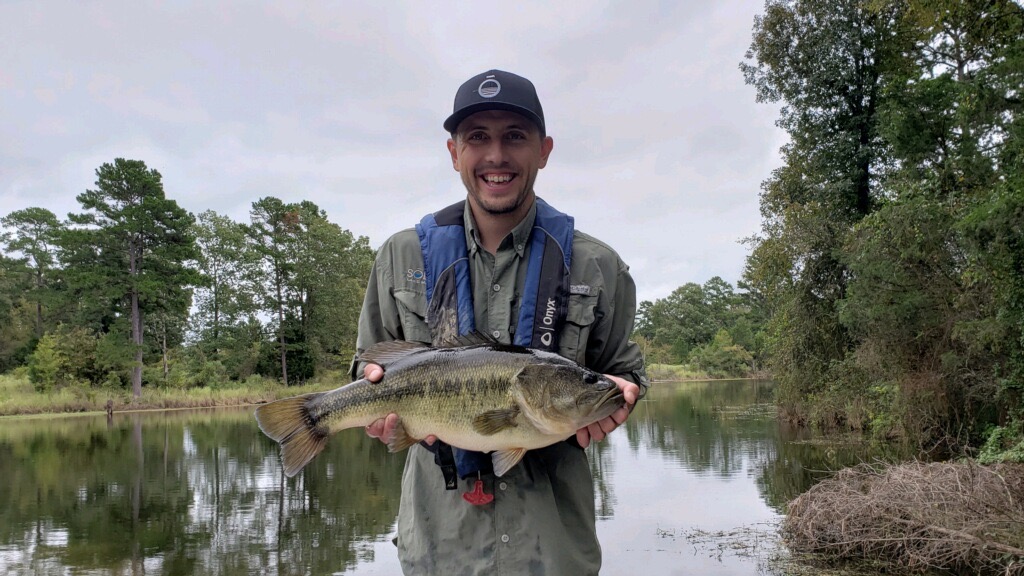
Should I Be Concerned with Genetics When Stocking Largemouth Bass?
Written by Industry Expert Dr. Vic DiCenzo, Fisheries Biologist
Fish stocking is one of the most common management practices employed by fisheries managers to help enhance recreational fishing.
Here are the top 8 reasons why fisheries managers stock fish:
- Establish populations in new or reclaimed lakes and ponds
- Supplement a population that experiences poor reproductive success
- Create a “put-and-take” fishery (such as trout or channel catfish)
- Introduce an alternative species
- Introduce genetic diversity
- Control predator populations
- Enhance the forage base
- Control undesirable species with a biological solution

Fish Stocking: Should I Care About Largemouth Bass Genetics?
Given the myriad of reasons why managers stock fish, a number of decisions must be made prior to stocking. When it comes to stocking Largemouth Bass, undoubtedly, the single most discussed topic is genetics.
Florida Bass (FLMB) are native to peninsular Florida, and because of their ability to grow faster and reach larger sizes, they have been stocked widely outside their native range. Largemouth Bass (often referred to as Northern Largemouth Bass, NLMB) are native to the St. Lawrence River and Great Lakes, Mississippi River basins, and Atlantic Slope drainages from North Carolina to Florida, and Gulf Slope drainages from southern Florida into northern Mexico. Due to widespread stocking, much of the original NLMB distribution is now comprised of fish with both Florida and Northern genetics (called intergrades).
Hatchery managers can cross pure FLMB and NLMB to produce individuals called F1 hybrids. These first-generation hybrids are believed to be aggressive like the NLMB and fast growing like the FLMB, making them popular with private lake and pond owners.
Despite the potential growth and size advantages of FLMB, the genetics of stocking Largemouth Bass is still debated by fisheries professionals. Three factors are often discussed: growth, survival and catchability. Although a number of studies have examined Largemouth Bass performance related to genetics, definitive results that could inform better trophy fisheries management decisions are lacking. Therefore, fisheries managers must make the best possible decision on a case-by-case basis to achieve objectives.

Fisheries managers should consider the advantages and disadvantages of NLMB, FLMB and F1 Largemouth Bass when determining which strain to stock. Although FLMB generally grow faster and to a larger ultimate size, survival decreases in more northern locations. Consequently, professional fisheries management companies may not achieve their desired objectives by stocking FLMB in New England waters. Similarly, NLMB may not grow as fast as FLMB in southern climates. Therefore, if survival is poor, then fewer fish will live to realize this growth advantage. Thus, stocking success requires an understanding of how growth and survival interact to determine how your stocking will perform and, ultimately, what the fishing experience will be like. F1 hybrids tend to exhibit the best traits of the NLMB and the FLMB— above average growth, higher survival rates in cooler water, and better catch rates. Scientists refer to these advantages in traits as “hybrid vigor.”
If F1 hybrids demonstrate the best performance traits of NLMB and FLMB, then why is there so much debate over Largemouth Bass genetics when it comes to stocking? F1 Largemouth Bass will spawn in several years and their offspring will no longer be first generation hybrids. These second-generation (Fx) hybrids may not exhibit the hybrid vigor of their parents. Subsequent generations are even further removed from the advantages of the F1 Bass, so populations consist of Fx hybrids. Consequently, the advantages of F1 Largemouth Bass could be short-lived. However, because of stocking, most Largemouth Bass populations consist of Fx fish. So, it is quite natural to have a fishery consisting of various generations of Largemouth Bass intergrades.
Lake and pond managers must remember that while stocking is a common fisheries management strategy, it alone does not guarantee success. Careful consideration to regional/geographic location, fish habitat, productivity, harvest, water quality and prey management must be given to any fisheries management plan to help achieve the desired objectives.
FREE REPORT: 6 Reasons to Invest in a Fisheries Management Company
Vic DiCenzo, PhD, is a member of the fisheries team at SOLitude with more than two decades of industry experience. Vic designs and implements studies to collect fisheries data from lakes and ponds, and makes recommendations to clients for the long-term management of their aquatic resources. He has published numerous research articles and presented research results across the country.
SOLitude Lake Management is committed to providing full service lake and pond management solutions that improve water quality, preserve natural resources, and reduce our environmental footprint. Our services include lake, pond and fisheries management programs, algae and aquatic weed control, mechanical harvesting, hydro-raking, installation and maintenance of fountains and aeration systems, water quality testing and restoration, bathymetry, lake vegetation studies, biological assessments, habitat assessments, invasive species management and nuisance wildlife management. Services, consulting and aquatic products are available to clients nationwide, including homeowners associations, multi-family and apartment communities, golf courses, commercial developments, ranches, private landowners, reservoirs, recreational and public lakes, municipalities, parks, and state and federal agencies. Learn more about SOLitude Lake Management and purchase products at www.solitudelakemanagement.com.









